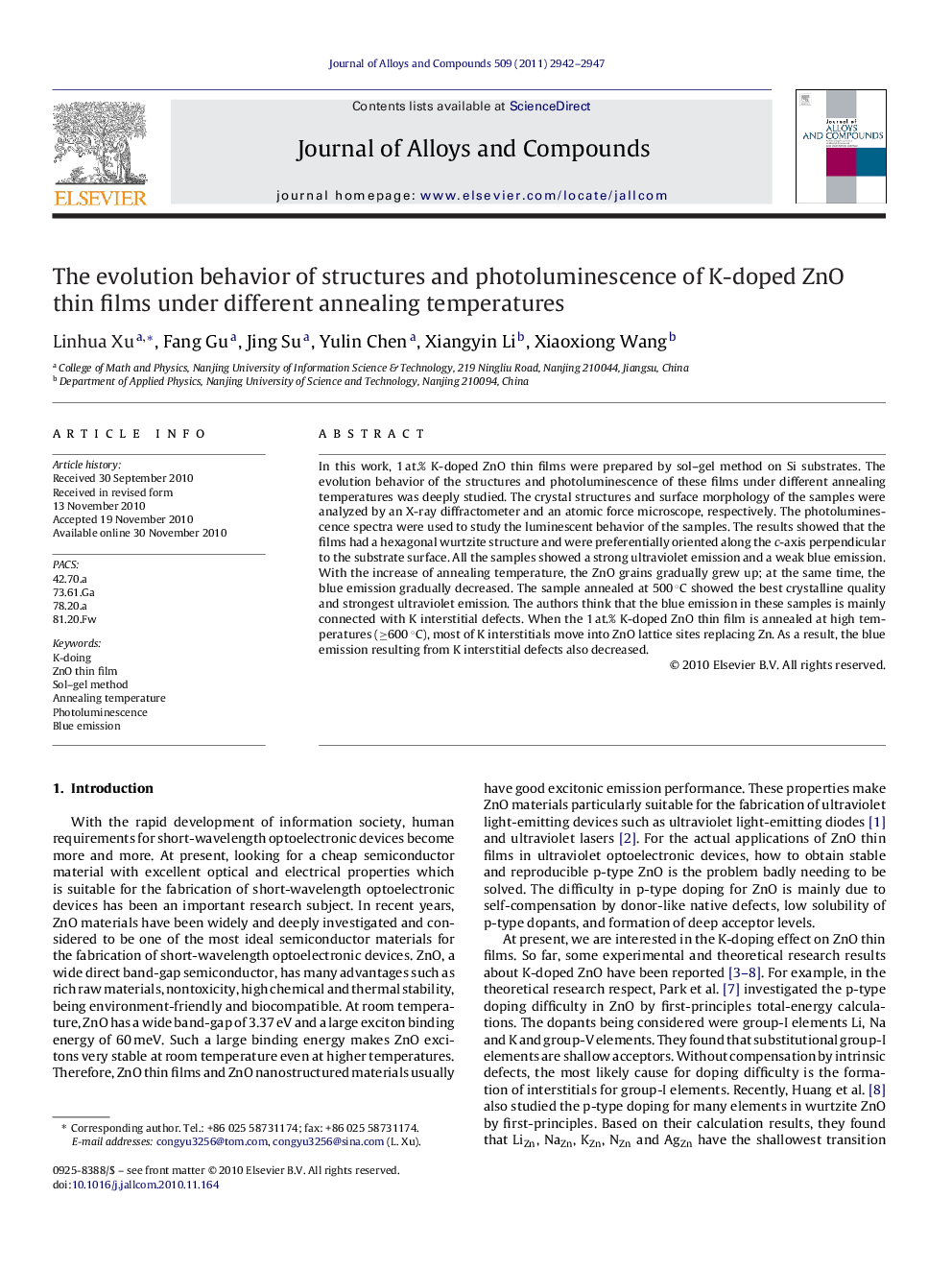| Article ID | Journal | Published Year | Pages | File Type |
|---|---|---|---|---|
| 1617657 | Journal of Alloys and Compounds | 2011 | 6 Pages |
In this work, 1 at.% K-doped ZnO thin films were prepared by sol–gel method on Si substrates. The evolution behavior of the structures and photoluminescence of these films under different annealing temperatures was deeply studied. The crystal structures and surface morphology of the samples were analyzed by an X-ray diffractometer and an atomic force microscope, respectively. The photoluminescence spectra were used to study the luminescent behavior of the samples. The results showed that the films had a hexagonal wurtzite structure and were preferentially oriented along the c-axis perpendicular to the substrate surface. All the samples showed a strong ultraviolet emission and a weak blue emission. With the increase of annealing temperature, the ZnO grains gradually grew up; at the same time, the blue emission gradually decreased. The sample annealed at 500 °C showed the best crystalline quality and strongest ultraviolet emission. The authors think that the blue emission in these samples is mainly connected with K interstitial defects. When the 1 at.% K-doped ZnO thin film is annealed at high temperatures (≥600 °C), most of K interstitials move into ZnO lattice sites replacing Zn. As a result, the blue emission resulting from K interstitial defects also decreased.
Research highlights▶ It is found that the 1 at.% K-doped ZnO thin film annealed in air at 500 °C has the best crystalline quality and ultraviolet emission performance. ▶ The different annealing temperatures lead to different K-doping configurations in ZnO. ▶ The blue emission probably results from K and Zn interstitial defects.
